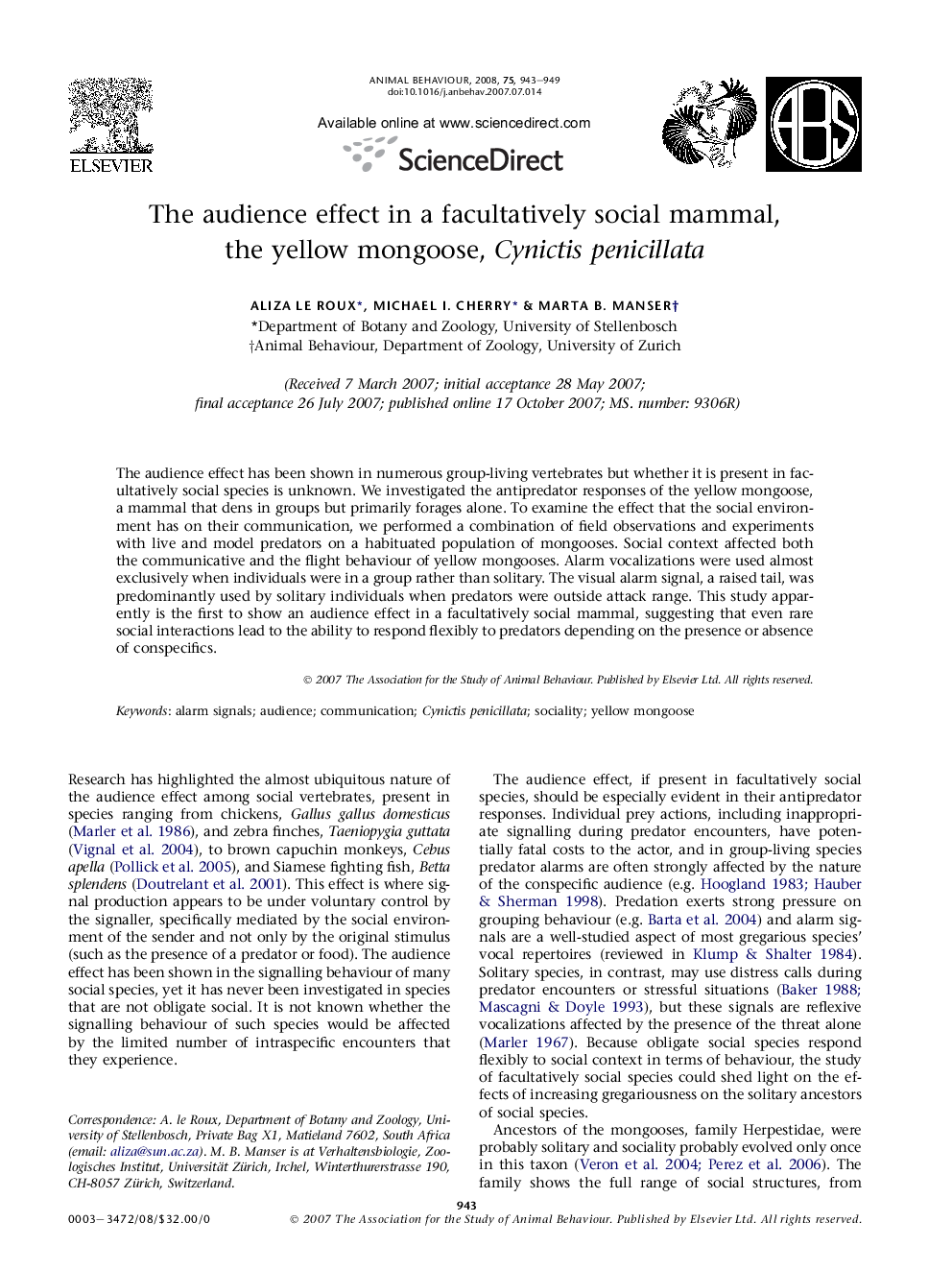| کد مقاله | کد نشریه | سال انتشار | مقاله انگلیسی | نسخه تمام متن |
|---|---|---|---|---|
| 2418917 | 1104360 | 2008 | 7 صفحه PDF | دانلود رایگان |

The audience effect has been shown in numerous group-living vertebrates but whether it is present in facultatively social species is unknown. We investigated the antipredator responses of the yellow mongoose, a mammal that dens in groups but primarily forages alone. To examine the effect that the social environment has on their communication, we performed a combination of field observations and experiments with live and model predators on a habituated population of mongooses. Social context affected both the communicative and the flight behaviour of yellow mongooses. Alarm vocalizations were used almost exclusively when individuals were in a group rather than solitary. The visual alarm signal, a raised tail, was predominantly used by solitary individuals when predators were outside attack range. This study apparently is the first to show an audience effect in a facultatively social mammal, suggesting that even rare social interactions lead to the ability to respond flexibly to predators depending on the presence or absence of conspecifics.
Journal: Animal Behaviour - Volume 75, Issue 3, March 2008, Pages 943–949